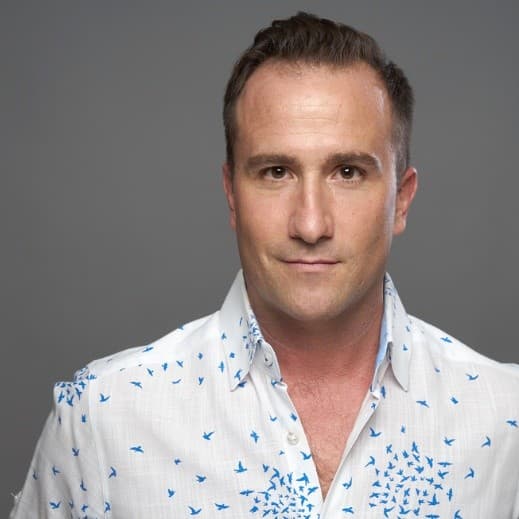5 Techniques for Auditioning and Getting Hired as a Voice Actor

5 Techniques for Auditioning and Getting Hired as a Voice Actor

No matter which type of actor you are, auditioning can be stressful. Sometimes we're not given all the details and feel like we have to wing it. As a Voice Actor, this can be particularly frustrating, so here are my five techniques for auditioning and getting hired as a Voice Actor.
1. Read Everything
Most people don't write something down for the sake of it; they are conveying the information they believe is essential for the reader to know. Clients looking to hire Voice Actors are no different. So, when an audition mentions the age range, style, and tone a client is looking for with their project, talent should consider all of the information and audition accordingly.
This also goes for additional information that is given. Clients will often mention the audience the Voice Actor would be speaking to. Speaking to a group versus one person impacts the delivery of a script, so be sure you understand who you're talking to. Clients will often mention if they'd like a live session or the particular file format they need for the final delivery. Be sure you can complete everything the client says they need and let them know your capabilities in your audition messaging.

2. Don't Assume
This can be challenging when we aren't given much information for one audition. However, it is extremely important we don't assume anything about what the client wants. All we can do is audition based on the criteria we are given, so if we're not given a lot of criteria, we audition based on our understanding of what is being asked. But remember, this is not the same thing as assuming. Assuming can take many directions, so try to work within the parameters given even if there aren't many.
3. Provide Two Takes
As a follow-up to the last point, while it's not good to assume what a client wants, it's also ok to read the copy in an audition within those parameters but a little differently to offer a variety (and show the client you have that ability). Options are always good, and I'd say that's even more true when a client reviews multiple auditions for the exact copy.
My recommendation to any new Voice Actor auditioning is to give each potential client one take based on what is being asked in the project description and then a second take based on your interpretation of the copy and direction. This provides the client with options when reviewing multiple auditions and shows that you can provide variance for the read.
4. Audition, Audition, Audition
The only way to learn how to be a better Voice Actor and up your chances of getting hired is to audition as much as you can. Recently, I spoke with Voice Actor Dani States, who said, "If you don't like auditioning, don't be a Voice Actor." And she's right: auditioning is the lifeblood of any Voice Actor's business, so if you're not a fan, this industry may not be for you.
Auditioning is one of the only ways to know what the landscape of voiceover looks like at any given moment, as well as THE way potential clients can find you and hear your work.

5. Look Up Inspiration
This is a technique I use when auditioning, and it's proven helpful. Many clients will provide references to a tone or style they're going for via video, but others will not. Listening to other voiceover reads and deliveries within the context of what a client is asking for in an audition does two things: 1. It allows us to hear copy read aloud, which gives us ideas on how we might deliver similarly, and 2. It provides us with an example of a delivery to practice in our own voice. This has been a handy strategy for me when I can't quite get my voice to do what I want, but I know what the client is asking for. Sometimes all it takes is a spark of an idea on how to manipulate your voice slightly for a particular audition read.
To look videos up on my own, I simply Google keywords like "technology ad," "car commercial," or anything else that's relevant to what the copy contains for the audition. iSpot.tv is another great resource for any kind of commercial. A good way to better understand what the client is asking for is to look up examples of what's currently being hired in that same direction given by the client.
When clients provide references in auditions, I go to YouTube or my browser and save the videos. This is my tactic when I'm looking for inspiration outside of what a client provides as well. I've created a private playlist on my YouTube channel titled "VO Inspiration" that I refer back to when I need it.
To Wrap Up
While all of these techniques will help you as you audition and work to get your first gigs under your belt, the more you practice and audition, the more familiar you'll become with how you work, and, in turn, you'll begin to create your own strategies for success. If you're a Voice Actor, what techniques have you used for auditioning? Let us know in the comments.
Got an idea for a post? Or have you collaborated with Stage 32 members to create a project? We'd love to hear about it. Email Emily at emily@stage32.com and let's get your post published!
Please help support your fellow Stage 32ers by sharing this on social. Check out the social media buttons at the top to share on Instagram @stage32, Twitter @stage32, Facebook @stage32, and LinkedIn @stage-32.
About the Author

Melanie Scroggins
Voice Artist, Voice Actor, Audio Post-Production
Hey, y'all! I'm Melanie Scroggins - Voice Actor, Audio Producer & Host of The WFH Voice Actor Podcast. I've had the privilege of working on campaigns for some of the most well-known brands like Google, Nintendo, Hyatt, Target, NerdWallet, AT&T, and more all from home. And I LOVE teaching other freel...





